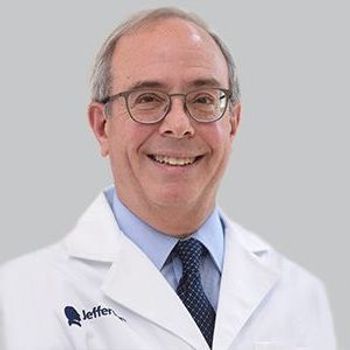
Youth With Migraine Improve Post-Preventive Treatment Regardless of Therapy Continuation
Results from the CHAMP trial of adolescents and children with migraine add to the already active and ongoing discussion surrounding the use of preventives in this population.
Scott Powers, PhD, ABBP, FAHS
Data from a survey of the 3-year CHAMP trial presented at the
These data add to the already active and ongoing discussion surrounding the use of preventive medications in the youth population with migraine.
In total, aside from the 12-month mark when the placebo group had better headache reduction compared to topiramate (difference, -2.58 days; 95% CI, -5.35 to 0.35; P = .03), all other comparisons between those groups and an amitriptyline-treated group showed no differences in the 3 time points assessed (amitriptyline vs placebo: 12, 24, 36 months; amitriptyline vs topiramate: 12, 24, 36 months; topiramate vs placebo: 24, 36 months).
“These novel findings have direct implications for practice guidelines. In fact, in 2019, the latest guidelines were published in Neurology, specifically requesting data on long-term follow-up,” study author Scott Powers, PhD, ABPP, FAHS, professor of pediatrics, and CCRF Endowed Chair, Cincinnati Children's Hospital and University of Cincinnati College of Medicine, said in his presentation, citing the
“For clinicians, these data strongly suggest that, if you use a prevention medication or pill-taking approach, that it can be stopped with realistic and informed expectations for continued good functioning over time,” Powers added.
READ MORE:
The initial post-trial survey, intended to examine headache days and disability at 3, 6, 12, 18, 24, and 36 months post-CHAMP, was completed by 203 participants with high retention (6 months: 92%; 12 months: 88%; 18 months: 80%; 24 months: 81%; 36 months: 73%). The respondents averaged 11 headache days per month at trial baseline and had an average Pediatric Migraine Disability Assessment (PedMIDAS) score of 41. Post-CHAMP, monthly headache days were reduced to 5, and PedMIDAS scores were lowered to 18.
All told, amitriptyline decreased monthly headache days, on average, by 3.98 days (95% CI: 2.46—5.49; P <.001), while topiramate reduced them by 2.26 days (85% CI, 0.63—3.89; P <.0069), and placebo reduced them by 4.84 days (95% CI, 2.81—6.87; P <.0001). No interactions between treatment group and ≥50% responder status was observed.
For PedMIDAS scores, all 3 treatment arms showed significant improvement from trial baseline to the 12-month survey time point, with no differences found between groups. Similarly, there was also no interaction between treatment group and responder status.
Notably, at each survey time point, only 20% to 28% of respondents reported current preventive medication use. No statistically significant differences on this variable between the treatment groups at any of the 12-, 24-, and 36-month time points were identified.
“We know that most youth in the CHAMP trial improved, and now we know that those improvements were maintained up to 3 years,” Powers said in his presentation. “We also know, consistent with the CHAMP trial, there were no differences that emerged favoring either medication, and up to 88% did not continue to take a prescription prevention medicine for migraine. This is important to communicate to families.”
Powers and colleagues concluded by writing that ”these results imply that we should expect youth to improve and that they continue to do well up to 3 years after that improvement. Continuation of a pill-based therapy is generally not indicated based on these results.”
For more coverage of AHS 2020,
REFERENCES
1. Powers SW, Chamberlin LA, Peugh J, et al. Childhood and Adolescent Migraine Prevention [CHAMP] Trial: The 3-year Follow-up Survey Results. Headache. 2020;60(S1 suppl). 1-156. doi: 10.1111/head.13854
2. Oskoui M, Pringsheim T, Holler-Managan Y, et al. Practice guideline update summary: Acute treatment of migraine in children and adolescents. Neurology. 2019;93:1-13. doi: 10.1212/WNL.0000000000008095.
3. Oskoui M, Pringsheim T, Billinghurst L, et al. Practice guideline update summary: Pharmacologic treatment for pediatric migraine prevention. Neurology. 2019;93:1-10. doi: 10.1212/WNL.0000000000008105.
Newsletter
Keep your finger on the pulse of neurology—subscribe to NeurologyLive for expert interviews, new data, and breakthrough treatment updates.































